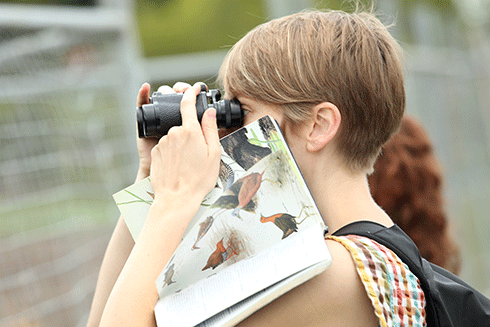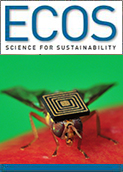
|
Published: 31 March 2014
Cities take on challenge of biodiversity and climate adaptation
Peregrine falcons soaring above the inner Sydney suburb of Ultimo and blue-tongue lizards sunning themselves in Sydney Park are some of the recent sightings of lesser-known urban dwellers spotted in the heart of Sydney, thanks to improved habitat and habitat connectivity.

|
|
No, not a ‘twitchathon’, but urban birdwatchers in Sydney Park. Credit:
City of Sydney
|
The City of Sydney has now developed an Urban Ecology Strategic Action Plan, which will build on these efforts to protect and preserve urban biodiversity, support action to conserve local native plants and animals, and improve wildlife habitat for all types of creatures.
Ecological surveys have found 365 native plants and 99 fauna species in the City. These include the Eastern Dwarf Tree Frog, small birds like the Superb Fairy Wrens and Silvereyes, and freshwater wetland birds including the Royal Spoonbill, Australian Reed Warbler and Black-winged Stilts.
One volunteer at Rozelle Bay Community Native Nursery, David Lawrence, says: ‘Over the years I have been volunteering, there has been a significant return of bird life to the inner city. It’s wonderful to not only observe these species but to hear their beautiful musical calls in the heart of our city.
‘Biodiversity adds to our quality and it’s important we spread the message about the importance of flora and fauna in cities with our children.’
Meanwhile the City of Melbourne is developing a strategy for the city to better respond to extreme weather.
Between 14 and 17 January this year, daily temperatures above 40°C are estimated to have cost metropolitan businesses around $37 million in lost revenue, according to research commissioned by the City of Melbourne as part of its Climate Change Adaptation Strategy.
A survey of more than 600 local businesses found an overall decline in revenue of almost 10 per cent. The sectors which were impacted the most were retail, food and beverage and accommodation, with 78 per cent of these types of businesses impacted.
More than half the businesses surveyed said they were ‘very or fairly concerned’ about future heat wave impacts on their business.
City of Melbourne Environment portfolio chair, Councillor Arron Wood, said Council is firmly focused on building Melbourne’s resilience to climate impacts.
‘We’re doubling tree canopy cover for our urban forest, upgrading drainage infrastructure, funding more energy efficient buildings, implementing planning processes to minimise climate risk and installing various water-sensitive urban design initiatives.
‘Heatwaves don’t only impact our city economically, heat-related illness also kills more Australian’s each year than any other natural disaster so City of Melbourne has identified this as a priority issue we must prepare better for.
‘In December 2013, the Rockefeller Foundation announced Melbourne as one of the first 33 cities to participate in its 100 Resilient Cities Program. This program is a significant opportunity to further enhance Melbourne’s ability to cope with heat waves like the one we experienced in January.’
As part of this program Melbourne will receive support to recruit a Chief Resilience Officer whose role will be to create a Resilience Strategy for metropolitan Melbourne.
Source: City of Sydney/City of Melbourne



